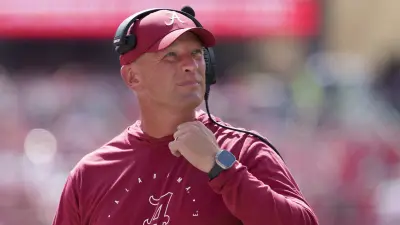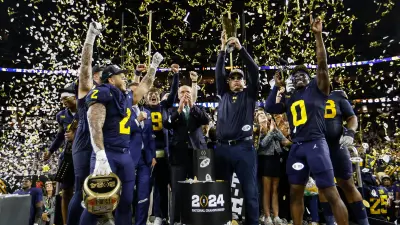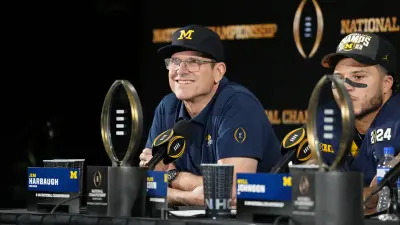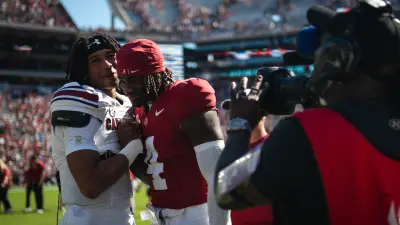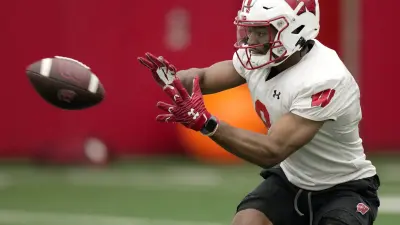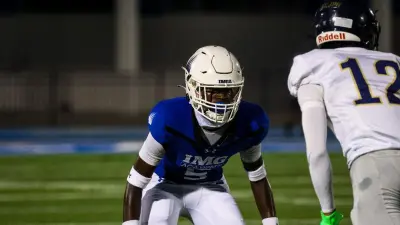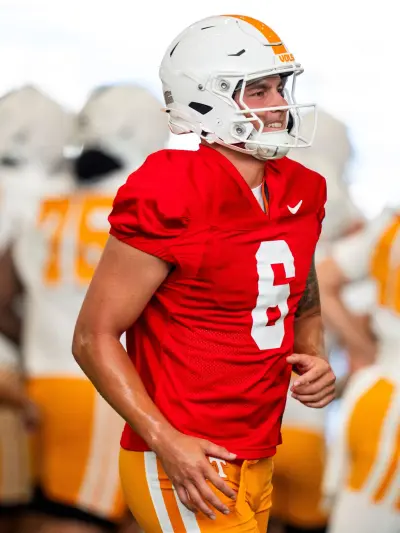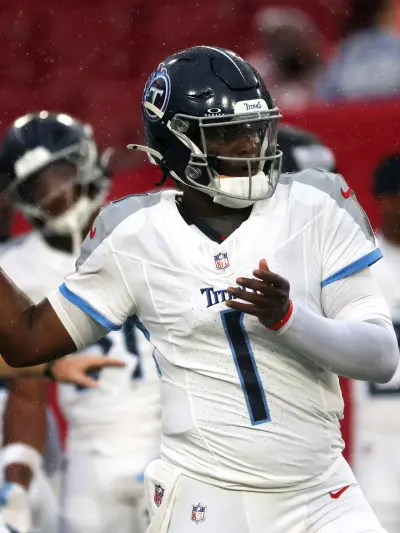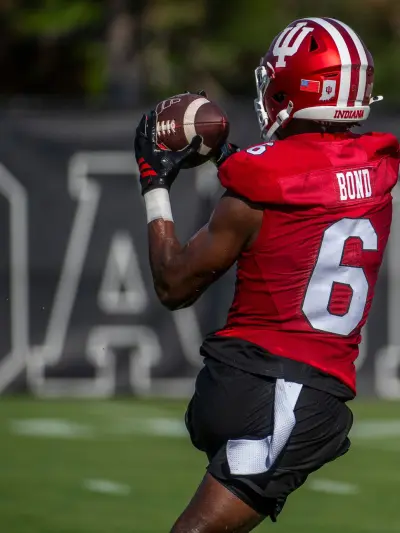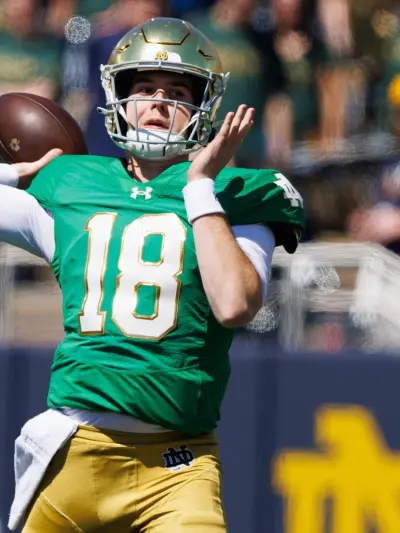Is the modern player’s potential measured by the stopwatch or through tools like game film breakdowns assisted by AI? This debate has gone far beyond stopwatch versus instinct because high-tech data has entered the scene. As neither side tells the whole story, the most reliable way to measure performance is to blend both and focus on what the team and individual truly need to succeed.
Beyond the Stopwatch
Teams are now using GPS tracking, biometric wearables, and advanced video analytics to measure player performance in ways that weren’t possible a decade ago. This goes beyond measurables like size and strength, or intangible skills like performing under pressure.
GPS devices worn during practices and games can track the player’s top in-game speed, their acceleration bursts, and total distance covered. It captures how fast a player moves in real football situations, which includes weaving through defenders, changing direction, and sprinting from a dead stop.
Biometric tools can monitor heart rate recovery, muscle load, and even hydration levels, to help coaches understand a player’s endurance and readiness. These metrics, alongside AI-powered video analysis platforms, can paint a clear picture of whether a particular player is ready to hit the field or not. AI-assisted video analytics break down every snap a player takes, tagging patterns in movement and reaction times to specific plays.
Much of the data these new developments capture is tied directly to in-game execution. While these innovations are transforming football scouting, they’re also helping a special demographic make better picks for their in-game or tournament bets. The eSports community doesn’t just rely on gut feelings to secure their wins, especially now that various guides are available to help.
According to Charlie Pearson’s guide, players can bet on major tournaments, claim bonuses for free cash, and even watch the action live on the best eSports betting sites in the US (see details) Just like eSports bettors look for every possible edge, football recruiters rely on a complex blend of data to evaluate incoming talent, and that process often starts with the star rating system.
More Sports News
The Science of Star Ratings
Every year, football players across the country are evaluated, ranked, and labeled with “star ratings” by recruiting services. A five-star recruit is seen as a future college star, while a two-star prospect might be overlooked altogether. The process combines the observed skill and technical or “tech” metrics.
One way to view the bigger picture is through the Blue-Chip Ratio (BCR), which is the percentage of elite recruits a program has signed over the past four classes. Consistently winning programs will obviously have high BCRs due to the fact that most of their lineups consist mainly of elite players. In 2025, Ohio State led the pack at 82%, with Alabama close behind at 78%, which proves that elite talent acquisition is a big success factor in remaining a national contender year after year.
Even though this system is grounded in data and observation, the challenge is that it’s still far from perfect. A player who shines in drills may not perform as well in live game situations, and vice versa. That means recruiting ratings can be a helpful tool in measuring player performance, but they’re not a crystal ball.
Where Ratings Fall Short
If you look at the numbers, recruiting ratings provide a starting point but leave a lot of unanswered questions. A four-star linebacker may have the size, speed, and tackling ability scouts look for, but if he struggles to read an offense or adapt to new schemes, his potential may never fully materialize.
Metrics can tell you who runs the fastest 40-yard dash or who can bench press the most weight, but they can’t fully measure decision-making, situational awareness, or resilience after a mistake. As a result, coaches who rely solely on the numbers risk missing out on players who might not “wow” them in the testing phase but excel when it matters most.
So Do Star Ratings Really Matter?
When you zoom out and look at recruiting classes as a whole, you’ll notice a pattern pointing to teams with higher-rated recruiting classes performing better at the college level. Research has shown that these recruiting class scores are statistically linked directly to later team success. In simpler terms, if your favorite team brings in a top-10 recruiting class, there’s a good chance they’ll be competitive over the next few years.
This is why programs like Ohio State, Alabama, Georgia, Michigan, LSU, and Oregon consistently land in the top 10 recruiting rankings. Five-star recruits are obviously the most wanted, and the race to sign them is happening earlier than ever. In fact, 95.6% of five-star athletes in the 2026 recruiting class had already committed by August 1, 2025.
However, the correlation isn’t perfect because recruiting ratings explain only about 36% of the variation in team quality according to Sagarin ratings. That means more than half of what determines a team’s success is tied to other factors like coaching, player development, health, team chemistry, and the ability to adapt to game situations. Attributes that are harder to measure, like football IQ, leadership under pressure, and adaptability, can make just as much difference as raw athleticism.
A Shortcut to Proven Skill
The NCAA transfer portal allows college athletes to move from one program to another without sitting out a season, giving teams access to players with proven college-level experience. Instead of taking a gamble on a recruit whose potential is often projected through measurables and camp testing, a coach can bring in a player who has already shown they can handle the college game.
Transfer players, on average, tend to have lower star ratings than top recruits when measured through a modified Blue-Chip Ratio. That’s partly because they’re evaluated with a different lens: one that places more weight on production and adaptability than on combine-style metrics.
How Performance Should Really Be Measured
Across recruiting, the NFL Draft, and the transfer portal, it’s clear that performance should be measured through a position-specific blend of skill and tech, with skill carrying more predictive weight. Modern technology has helped in the player development process, but it’s not the end-all be-all. Skill tells you how a player wins today, but tech tells you what they might be capable of tomorrow. The best way to go about measuring performance is to use both and understand which one matters more for the role at hand.
Without the player’s skills, there are no metrics to track, and that’s why skill-based evaluation has been shown to be a stronger indicator of long-term success. Tech-based metrics help flag potential and set a baseline, but they should be used as a filter, not the final verdict.

